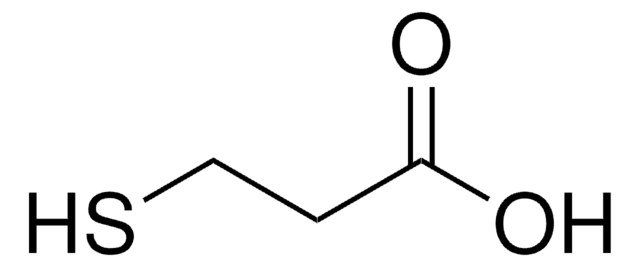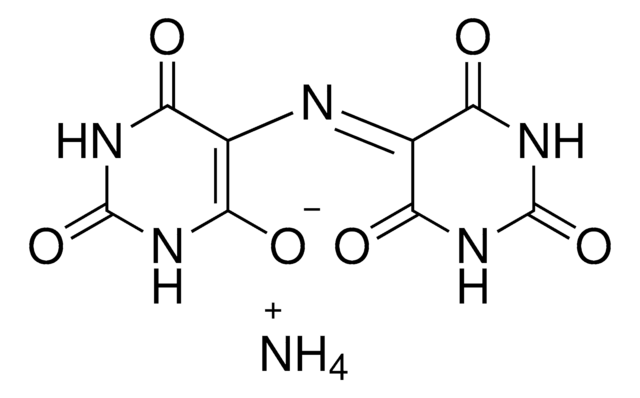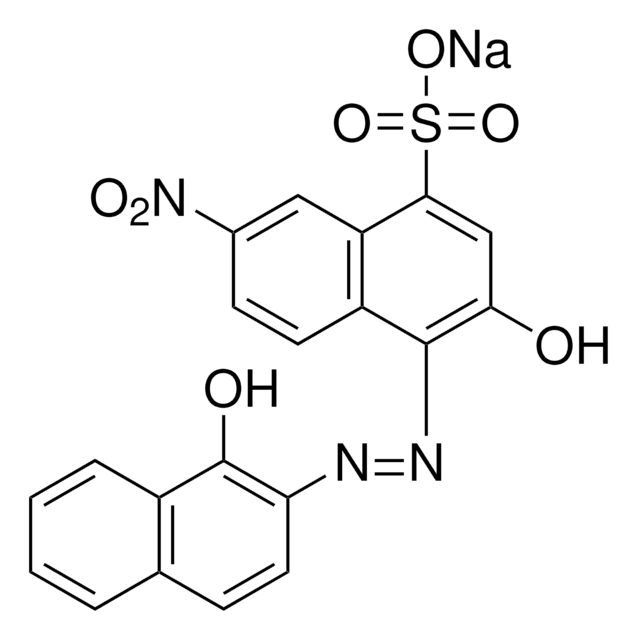349224
Copper
wire, diam. 2.0 mm, 99.999% trace metals basis
Se connecterpour consulter vos tarifs contractuels et ceux de votre entreprise/organisme
About This Item
Formule empirique (notation de Hill):
Cu
Numéro CAS:
Poids moléculaire :
63.55
Numéro CE :
Numéro MDL:
Code UNSPSC :
12141711
ID de substance PubChem :
Nomenclature NACRES :
NA.23
Produits recommandés
Niveau de qualité
Essai
99.999% trace metals basis
Forme
wire
Résistivité
1.673 μΩ-cm, 20°C
Diamètre
2.0 mm
pb
2567 °C (lit.)
Pf
1083.4 °C (lit.)
Densité
8.94 g/mL at 25 °C (lit.)
Chaîne SMILES
[Cu]
InChI
1S/Cu
Clé InChI
RYGMFSIKBFXOCR-UHFFFAOYSA-N
Quantité
25 cm (approximately 7 g)
150 cm (approximately 42 g)
150 cm (approximately 42 g)
Code de la classe de stockage
13 - Non Combustible Solids
Classe de danger pour l'eau (WGK)
WGK 2
Point d'éclair (°F)
Not applicable
Point d'éclair (°C)
Not applicable
Équipement de protection individuelle
Eyeshields, Gloves, type N95 (US)
Faites votre choix parmi les versions les plus récentes :
Déjà en possession de ce produit ?
Retrouvez la documentation relative aux produits que vous avez récemment achetés dans la Bibliothèque de documents.
Les clients ont également consulté
Seiko Ishida et al.
Proceedings of the National Academy of Sciences of the United States of America, 110(48), 19507-19512 (2013-11-13)
Copper is an essential trace element, the imbalances of which are associated with various pathological conditions, including cancer, albeit via largely undefined molecular and cellular mechanisms. Here we provide evidence that levels of bioavailable copper modulate tumor growth. Chronic exposure
R Squitti et al.
Neurology, 67(1), 76-82 (2006-07-13)
To assess whether serum copper in Alzheimer disease (AD) correlates with cognitive scores, beta-amyloid, and other CSF markers of neurodegeneration. The authors studied copper, ceruloplasmin, total peroxide, and antioxidants levels (TRAP) in serum; beta-amyloid in plasma; and copper, beta-amyloid, h-tau
Magnus Andersson et al.
Nature structural & molecular biology, 21(1), 43-48 (2013-12-10)
Heavy metals in cells are typically regulated by PIB-type ATPases. The first structure of the class, a Cu(+)-ATPase from Legionella pneumophila (LpCopA), outlined a copper transport pathway across the membrane, which was inferred to be occluded. Here we show by
Hiroshi Sato et al.
Science (New York, N.Y.), 343(6167), 167-170 (2013-12-18)
Carbon monoxide (CO) produced in many large-scale industrial oxidation processes is difficult to separate from nitrogen (N2), and afterward, CO is further oxidized to carbon dioxide. Here, we report a soft nanoporous crystalline material that selectively adsorbs CO with adaptable
Stephen G Kaler et al.
The New England journal of medicine, 358(6), 605-614 (2008-02-08)
Menkes disease is a fatal neurodegenerative disorder of infancy caused by diverse mutations in a copper-transport gene, ATP7A. Early treatment with copper injections may prevent death and illness, but presymptomatic detection is hindered by the inadequate sensitivity and specificity of
Notre équipe de scientifiques dispose d'une expérience dans tous les secteurs de la recherche, notamment en sciences de la vie, science des matériaux, synthèse chimique, chromatographie, analyse et dans de nombreux autres domaines..
Contacter notre Service technique






